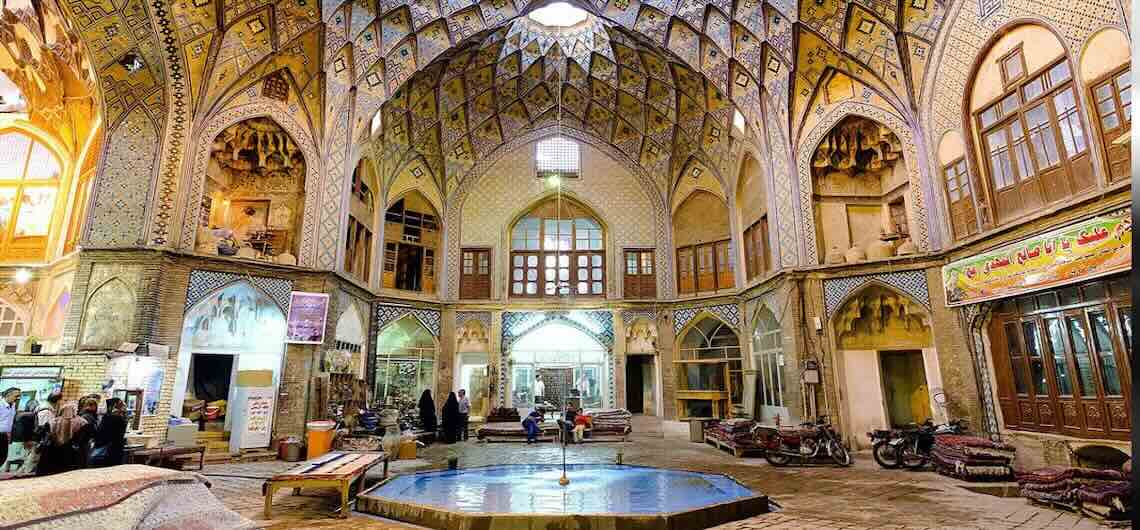Tehran Grand Bazaar
The Beating Heart of Iran’s Capital
Tehran Grand Bazaar, a centuries-old marketplace, is one of the most vibrant and historically significant commercial centers in Iran. Located in the heart of Tehran, this sprawling bazaar is not just a shopping destination but also a cultural and historical landmark that reflects the rich heritage, trade traditions, and social dynamics of Iran. Whether you’re a traveler, a history enthusiast, or a shopper looking for authentic Persian goods, the Grand Bazaar offers an unforgettable experience.
A Glimpse into History
The origins of Tehran Grand Bazaar date back to the Safavid era (16th–18th centuries), though it underwent major expansions during the Qajar period in the 19th century. Over time, it has grown into a massive labyrinth of interconnected alleys, domed passageways, and caravanserais, covering an area of more than 10 square kilometers. The bazaar has long played a vital role in Iran’s economy, serving as a hub for merchants, craftsmen, and traders from across the country.
During the Qajar and Pahlavi periods, it was not just a commercial center but also a key political and social gathering place where major movements and historical events took shape. Even today, the Grand Bazaar remains an influential center for Iran’s economic and political activities.
Navigating the Bazaar: What to Expect
Walking through Tehran Grand Bazaar is like stepping into a world of tradition and commerce. The maze-like corridors are lined with thousands of shops, selling everything from spices, textiles, and carpets to jewelry, antiques, and household goods. The bazaar is divided into sections, each dedicated to a specific type of product:
•Carpet Bazaar – A paradise for Persian carpet lovers, offering handwoven rugs from across Iran, including Kashan, Tabriz, and Kerman.
•Gold and Jewelry Bazaar – One of the most famous sections, where skilled artisans craft and sell intricate gold and silver jewelry.
•Spice and Herbal Medicine Bazaar – A fragrant area filled with colorful spices, dried herbs, saffron, and traditional remedies.
•Copper and Metalwork Alley – A showcase of Persian craftsmanship, featuring handmade copper and brass items.
•Clothing and Textile Market – A bustling section where you can find traditional Persian fabrics, scarves, and modern attire.
The bazaar is also home to historical caravanserais, such as Timcheh-e Moayer, which were once used as resting places for merchants and traders. Many of these ancient structures have been preserved and still function as trading centers.
A Culinary Journey in the Bazaar
No visit to the Grand Bazaar is complete without experiencing its rich culinary scene. Traditional restaurants and teahouses are scattered throughout the bazaar, offering authentic Persian cuisine. Some of the must-visit places include:
•Moslem Restaurant – Famous for its massive portions of Tahchin (Persian saffron rice cake with chicken or lamb).
•Sharaf-ol-Eslami – A historic eatery known for its delicious kebabs and stews.
•Haj Ali Darvish Teahouse – One of the smallest yet oldest teahouses in Tehran, serving aromatic Persian tea and sweets.
These establishments provide a perfect break from shopping, allowing visitors to relax and soak in the lively atmosphere of the bazaar.
The Cultural and Architectural Marvels
Beyond its commercial significance, Tehran Grand Bazaar is an architectural masterpiece, blending traditional Persian design with functional commercial spaces. The bazaar features high-vaulted ceilings, stunning brickwork, and intricately designed domes, which help regulate temperature and provide ventilation, making the shopping experience pleasant even in summer.
Some key historical and cultural landmarks within the bazaar include:
•Imam Khomeini Mosque (Shah Mosque) – A grand mosque located inside the bazaar, where merchants and shoppers often gather for prayers.
•Haj Seyed Azizollah Mosque – Another historic mosque featuring beautiful Persian tilework and a peaceful courtyard.
•Timcheh-e Hajeb-od-Dowleh – A magnificent caravanserai with a striking central dome, showcasing Persian architectural brilliance.
Best Time to Visit and Tips
The Grand Bazaar is open Saturday to Thursday from around 9:00 AM to 6:00 PM, with Fridays and public holidays being less active. To make the most of your visit, consider these tips:
•Visit in the morning to avoid crowds and explore the bazaar at a relaxed pace.
•Wear comfortable shoes, as the bazaar covers a vast area with uneven surfaces.
•Bargaining is expected, so don’t hesitate to negotiate prices with shopkeepers.
•Beware of pickpockets, as the bazaar can get very crowded, especially in peak hours.
Conclusion
Tehran Grand Bazaar is more than just a marketplace—it’s a living, breathing part of Iran’s history and culture. Whether you’re searching for unique souvenirs, admiring the stunning architecture, or simply immersing yourself in the vibrant energy of Tehran, the bazaar offers an experience like no other. It is a must-visit destination for anyone looking to understand the heart and soul of Iran’s capital.


Comments